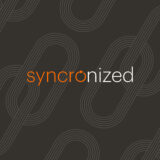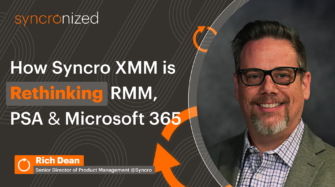Managed service providers are responsible for patch deployment, endpoint security, and troubleshooting for multiple clients — all without physical access to client systems and assets. Remote Monitoring and Management (RMM) tools are the only way to manage this essential work from afar.
This post takes a deep dive into the value of RMM MSP tools, what to look for when choosing RMM software, and how RMM solutions support efficiency and profitability for managed service providers.
Why MSPs need RMM software
Remote monitoring and management software provides access to client IT environments so MSPs can remotely monitor, troubleshoot, and report on endpoints, networks, and computers.
RMM software is an important part of running a profitable MSP or efficient help desk. With RMM tools, teams can:
- Automate and scale IT service management and monitoring tasks
- See the real-time status of every endpoint
- Intelligently route tickets for maximum efficiency
- Schedule software updates around client schedules
RMM tools provide remote support capabilities, allowing MSPs to diagnose and troubleshoot issues from any location. For example, a support technician can use an RMM tool to access a client’s machine and troubleshoot a problem without leaving their desk. Furthermore, advanced scripting and automated patch management capabilities let teams complete IT maintenance without manual work.
MSPs that use RMM tools can more efficiently serve their clients, improve end-user outcomes, and increase profits. Getting the right RMM software for MSP businesses can make a significant difference. For example, switching to Syncro’s RMM solution allowed a small MSP to save the equivalent of a full-time employee’s salary.
Finding the right RMM platform requires balancing business needs, functionality, and cost. What’s right for one MSP might not be right for another. Below are 14 use cases for RMM software; these are also the key features to consider when you evaluate remote monitoring and management solutions.
Ready to Scale Your Business?
Discover which RMM capabilities will help you boost your MSP’s productivity, efficiency, and profitability.
Key features to look for in RMM software
1. Patch management
Effective patch management is one of the most impactful ways an MSP can improve a client’s security posture. You can’t eliminate every cybersecurity risk, but regularly applying patches reduces exposure to vulnerabilities with known exploits. The best RMM tools help MSPs scale, audit, and refine patch management across their client base.
Automated patching and endpoint tasks improve security and efficiency. Look for customizable automation schedules and cybersecurity best practices for a robust and efficient solution.
2. Easy RMM agent install
RMM agents enable technicians to monitor, access, and control remote endpoints. The easier it is to add an RMM agent to an endpoint, the less friction there is in onboarding. When evaluating MSP software, consider the complexity of agent install and configuration, supported operating systems, and the number of assets you plan to manage. With an easy RMM agent install, you can quickly ramp up assets under management and speed up time to value (TTV) for your business and clients.
Did you know? G2 consistently rates Syncro as a “High Performer” in several categories?
3. Ticket management
MSPs have a lot of technical expertise, but project management requires a different skill set. Thankfully, the best remote monitoring platforms include an IT ticketing system that manages resource allocation, boosts helpdesk functionality, and tracks every ticket in real time.
4. Monitoring and alerting
Monitoring endpoints for resource utilization issues, performance problems, and policy violations helps MSPs detect — and potentially resolve — problems before their clients report them. Ensure your RMM platform supports alerts and notification channels that enable you to quickly identify issues and support your SLAs (service level agreements).
5. Custom scripting
Creating and running custom scripts can drastically improve MSP efficiency. MSPs can use custom scripts for everything from software installation to issue remediation. As you evaluate MSP tools, look for flexible scripting solutions that are easy to scale across your infrastructure.
6. Automatic issue remediation
It’s good when an MSP can detect an issue before their clients know about it. It’s great when an MSP can automate a solution and “solve problems in their sleep.” Automatic issue remediation combines alerting with other RMM solutions like scripting to help MSPs define rules for automating ticket resolution. Doing so helps improve mean time to resolution (MTTR).
7. Endpoint security and managed antivirus
Cybersecurity is a key aspect of modern business. Even small clients are at risk of a breach. Managed antivirus (MAV) features help MSPs improve their clients’ security posture and reduce risk. As you evaluate RMM tools, look for solutions that help you avoid antivirus vendor lock-in and provide security features such as real-time threat detection and malware scans.
8. Policy management
Asset policies enable MSPs to define a baseline for asset settings and preferences. If an asset deviates from a policy’s rules, technicians can receive an alert or configure an automation to address it. RMM solutions with robust policy management capabilities provide MSPs with better overall asset governance to maintain consistency and detect when assets are misconfigured.
9. Network management
Efficient network monitoring and management, proactive maintenance, and real-time insights into network performance are crucial. Look for features like network discovery, integration with cloud services, and capabilities for quick diagnostics and performance monitoring.
10. PSA capabilities
RMM solutions with professional services automation (PSA) give MSPs a comprehensive solution that boosts operational efficiency and reduces tool sprawl. PSA features let MSPs connect billable tasks to invoice management, automate reconciliation and billing, and ensure projects stay within scope.
11. Integration capabilities
Even though RMM solutions with PSA capabilities give you extensive features, you may have other applications or technology you want to continue using. Ensure the RMM software integrates with your preferred tools and systems, such as cloud services, security solutions, CRM software, and email platforms.
12. Migration support
When you switch to new RMM software, you need a way to easily move clients to your new system and preserve contact details, ticket history, and site configs. Migrations are specific to IT systems — for example, Syncro enables contact imports from Atera, Autotask, NinjaOne, and ConnectWise, as well as CSV file imports.
13. Activity reporting
Reports and visualizations help MSPs keep track of MSP key performance indicators (KPIs) and demonstrate value to clients. Look for RMM solutions that support reporting dashboards and report creation that align with your business needs and enable tracking of the KPIs that matter to your business.
RMM tools are an MSP staple for a reason: The benefits below lead to a healthier bottom line and happier clients.
14. Per-technician pricing
RMM software that charges by the endpoint can quickly make remote access unaffordable. RMM solutions that offer pricing by technician help MSPs control and project costs and take on new client work without straining budgets.
The benefits of RMM software
Some of the benefits of RMM software include:
- Improved efficiency. PSA integrations, automations, and remote management enable MSPs to do more with less.
- Better visibility. An RMM platform brings all work into a single system, with real-time views of task status, security vulnerabilities, and software assets.
- Increased control. Automation features, patch management, and a scripting engine that lets you customize your workflows give you greater control over your work.
- Higher uptime. RMM alerts and automated remediation help MSPs improve overall workload availability.
- Client satisfaction. With remote monitoring and management software, you can detect and resolve problems to keep clients up and running.
How Syncro helps you run a more profitable MSP
“Overall, our business would not be where it is now without Syncro. The cost has allowed us to make a profit, even when we were shooting ourselves in the foot with our low client rates. The support team is pretty fast and very friendly which is very important to someone who is in support.”
– David S. Owner of an Information Technology and Services business that switched from ITarian to Syncro (Source: Capterra)
Syncro is an all-in-one integrated MSP platform that includes RMM and PSA capabilities. It is purpose-built to help MSPs run more profitable businesses. MSPs trust Syncro to help them optimize and scale their business while keeping clients happy. Unlike other RMM platforms, the per-technician pricing model is designed to incentivize and support (not penalize) MSP growth.
To test drive Syncro for yourself, sign up for a free trial today.
FAQ
What is RMM software?
RMM software, also known as remote monitoring and management software, is a powerful IT management tool designed to empower MSPs and IT professionals. This software enables them to easily monitor and manage endpoints, networks, and computers remotely.
By providing real-time visibility into their client’s systems, RMM tools allow MSPs to proactively detect and resolve issues, enhance system performance, and minimize downtime. With features like secure remote access, patch management, and automated software updates, MSPs can efficiently manage client devices from a centralized console, ensuring optimal performance and security.
How do you choose the right RMM solution?
Selecting the right RMM solution is a big decision for MSPs and IT professionals. Here are key factors to consider:
- Automation capabilities: Opt for a tool that offers robust automation capabilities to streamline routine tasks and boost efficiency.
- Patch management: Ensure the RMM platform provides comprehensive patch management features to keep clients’ systems secure and up-to-date.
- Remote access: Choose an RMM tool that offers secure remote access to client devices, enabling quick and effective troubleshooting and remediation.
- Integration: Make sure RMM tools integrate seamlessly with other IT management tools, such as professional services automation (PSA) and backup and disaster recovery (BDR) solutions.
- Scalability: Select an RMM tool that can grow with your business, offering flexible pricing and deployment options to accommodate your expanding needs.
How do you measure RMM ROI and cost savings?
Measuring the return on investment (ROI) and cost savings of an RMM solution demonstrates its value to your business. Consider the following key metrics:
- Time savings: Measure the time saved by automating routine tasks and reducing the need for on-site visits, allowing your team to focus on more strategic activities or serving additional clients.
- Cost savings: Calculate the cost savings achieved by minimizing the need for hardware and software upgrades, as well as reducing downtime and data loss.
- Revenue growth: Track the revenue growth achieved by offering new services and improving client satisfaction.
- Client retention: Monitor client retention rates to demonstrate the value of the RMM tool in enhancing client satisfaction and loyalty, leading to long-term business relationships.
How does RMM software improve security and compliance?
RMM software plays a pivotal role in ensuring the security and compliance of your clients’ systems. When evaluating RMM platforms, consider the following security and compliance features:
- Endpoint security: Look for an RMM platform that provides robust security features, including antivirus and anti-malware protection, to safeguard clients’ systems.
- Data encryption: Ensure the tool encrypts data both in transit and at rest, protecting sensitive client information from unauthorized access.
- Access controls: Choose a tool that offers granular access controls, allowing you to restrict access to sensitive areas of the client’s network.
- Compliance reporting: Select a tool that provides comprehensive compliance reporting features, making it easy to demonstrate adherence to regulatory requirements.
What are some best practices for RMM implementation?
Implementing RMM solutions requires careful planning and execution. Here are some best practices to ensure a successful implementation:
- Begin with a small pilot group to test and refine your RMM implementation, allowing you to identify and address any issues before a full-scale rollout.
- Establish clear workflows and processes for using the RMM tool, including incident response and problem management, to ensure consistency and efficiency.
- Provide comprehensive training to your staff, covering the solution’s features and functionality to maximize its potential.
- Continuously monitor your RMM implementation and make necessary adjustments to optimize performance and efficiency, ensuring the tool meets your evolving needs.
Share














